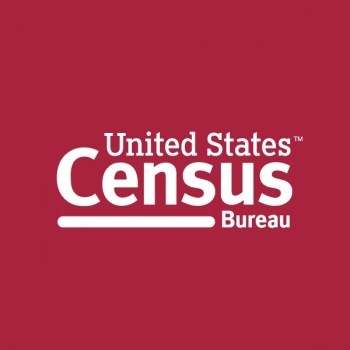U.S. Census Bureau: 2011 A Year of Successes and Anticipating 2012
In 2011, the Commerce Department's U.S. Census Bureau continued to provide quality statistics to governments and businesses to inform the decisions that affect everyone’s lives. These statistics touch every aspect of Americans’ lives–health, crime, income, education, labor force participation, housing conditions, consumer expenditures and a host of others.
While we have plenty to be proud of, here we highlight some of this year’s big successes.
Innovating Efficiencies:
The Census Bureau is building on the $1.9 billion in savings from the 2010 Census last year by looking for ways to innovate, become more efficient and to save money. The Improving Operational Efficiencies program has generated thousands of ideas from staff, including saving $24 million over a five-year period alone by consolidating IT storage and establishing an enterprise storage area network. We've also worked to streamline our regional office structure. By realigning the field infrastructure, the Census Bureau is saving taxpayer money and keeping pace with current developments in survey work worldwide. The restructuring is projected to result in $15 to $18 million in annual savings to the Federal government commencing in FY 2014. The Census Bureau is striving to be a responsible steward of taxpayer money and, like many in the current economic climate, is committed to the basic premise of doing more with less.
Delivering 2010 Census Products and ACS Data:
The Census Bureau has delivered its many 2010 Census and American Community Survey data products on time and on budget, including the statistics used by states in their redistricting and providing valuable local insights that paint a portrait of America. The ACS provides the most timely estimates available for thousands of small places and population groups on key social and economic attributes. For many of these places and groups, these are the only detailed socioeconomic characteristics available. In the Fall of 2011 the Census Bureau produced detailed statistics for over 700,000 distinct geographic areas, permitting local governments and businesses to make the case to new employers about the value of building new job producing activities in their locales.
Feeding the Nation's Appetite for Data:
Here at the Census Bureau, we know that our users want more statistical information; they want it in a more timely fashion; they want it on smaller geographic areas and subpopulations. So we're supplementing our talent in small area estimation, hopefully increasing the breadth of our estimates in many programs. We're redesigning the way that users can access our statistical information on the Web. We want everybody to be able to access our estimates on the Web using any device they happen to use. We are building new statistical products by combining multiple data sets behind our firewalls. We are investing in visualization tools to widen the audience of our statistical information. We will extract more information from the same data sources by increasing our analysis of the data we collect.
This coming year we will see more with our Web transformation and with new tools like the economic indicator dashboard and the county business and demographics map. We will also be gearing up for the Economic Census, and working hard to increase access to our data and participation in our surveys so we can continue to provide quality statistics about the nation's people, places and economy.






